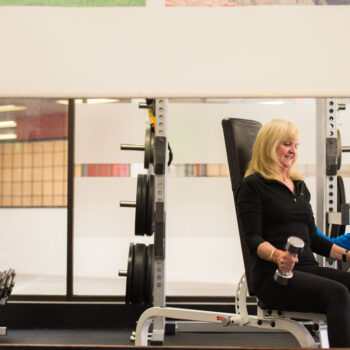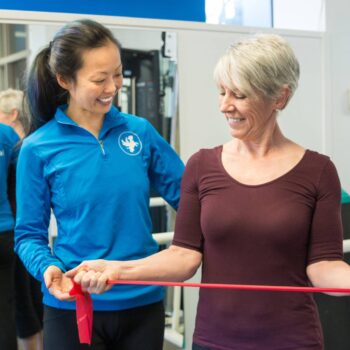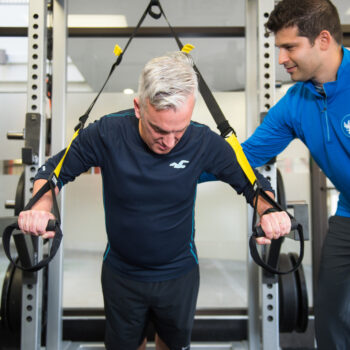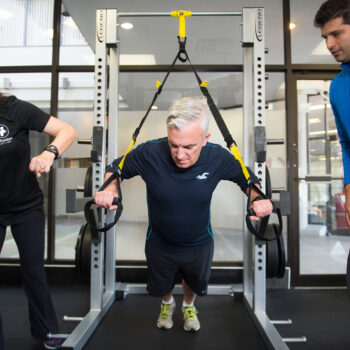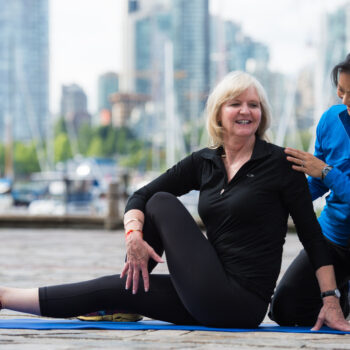Kinesiologist. What’s that?
It’s like a physiotherapist, right?
Oh goodness, no…we’re different!
But you both do active rehab and injury management. My cousin saw a kinesiologist after his car accident and got better. And my boss had a physiotherapist show him some exercises for his cycling injury…sounds the same to me!
We get asked this question quite often, a friend has an old skiing injury act up and is getting shooting pains down his leg, or a family member is noticing they’re getting stiffer and suffering from back pain. So what do you recommend? Google “Vancouver Kinesiology” or “Vancouver Physiotherapy” and pray for the best result?
Let’s break it down a bit and see if we can get some clarity on this topic
What is a Kinesiologist?
A kinesiologist a professional that has completed a minimum 4-year degree in Bachelors of Kinesiology or Exercise Science at an accredited University (such as SFU or UBC) focusing their studies on human movement, anatomy, physiology, biomechanics and other related topics. The curriculum often also includes psychomotor behaviour, epidemiological health studies, sports injuries management, ergonomics and sports nutrition.
Depending on the career path Kinesiologists wish to focus on, graduates may pursue optional certifications to further hone their skills as the Certified Exercise Physiologist, Certified Clinical Exercise Physiologist, Certified Strength and Conditioning Specialist (CSCS) and more.
Kinesiologists use evidence-based scientific research to help clients improve their health, wellness and overall performance in both daily life and sports. Found in clinical settings, gyms, care and athletic facilities, Kinesiologists treat a range of issues to optimize your physical potential, overcome chronic injuries and reduce pain through exercise and movement.
In BC, The British Columbia Association of Kinesiologists (BCAK) represents and advocates for Kinesiologists in the province and promoting Kinesiology as an integral part of personal health and wellness. Across Canada, The Canadian Association of Kinesiology (CKA) is our national advocate for advancing the profession. As terms for both Kinesiology and Physiotherapy can vary regionally, we’ve chosen to focus on kinesiologists in Vancouver, BC.
Kinesiologists are often found working on a health care team providing support for physical and occupational therapy and sports psychology. Besides health and wellness, our scope of practice includes Injury assessment, exercise therapy, disability / case management, ergonomics and workplace design, biomedical technology and research, corporate health promotion and program design.
What is a Physiotherapist?
Physiotherapy is a branch of physical medicine and rehabilitation with treatment goals to restore, maintain, and make the most of a patient’s mobility, function, and quality of life. The main goal for a physiotherapist is to restore function and decrease any pain from an injury. A physiotherapist can also help with both acute or chronic pain, and can diagnose any issues a client might be having. Physiotherapists often also take part in research, education, consultation and administration.
It is common for physiotherapists to have completed a Bachelor in Kinesiology before applying for a 2 years post-graduate program in Physiotherapy as the two degrees complement each other.
Physiotherapists can typically be found in hospitals or private clinics.
Another term used for physiotherapists is a “Physical therapist.” Compared to Kinesiologists, they can perform more advanced rehabilitation and treatment plans for their patients, incorporating the use of medical equipment, such as canes, wheelchairs, and walkers, and some physical therapists may specialize in a particular type of care, like geriatrics or orthopedics.
How We Work with You at Le Physique as Kinesiologists
Kinesiologists at Le Physique focus on helping you improve strength and with an appropriate conditioning program, rehabilitation and sport fitness. Our main objective to help you live a more functional, pain-free life, so you can do more of the things you love.
At Le Physique, we have a three-step treatment plan for clients specifically seeing us for rehabilitation or have a fitness goal that needs special care (such as a back injury or frozen shoulder). Often these clients may have an existing health care team (physiotherapist, Registered Massage Therapist, Chiropractor etc) that has diagnosed them and suggested they begin a highly tailored active rehabilitation program that includes strengthening and mobilization
Step 1 – Assessment and baseline. In this phase, we will analyze your medical history and determine what are the best areas a kinesiologist can support you, and work with your existing Health Care team for full-spectrum coverage.
Step 2 – Foundational strengthening and improve movement quality. In this step, we create an individualized plan, implement each stage, monitor and progress your workouts as you improve and provide feedback.
Step 3 – Strengthen and improve fitness / athleticism / injury prevention – By empowering you to take control of your health and wellness through action and education, we are able to focus on other aspects of fitness and invite you to get inspired about achieving goals that are near and dear to your heart.
Not only do clients come to us for special care programs, but the three-step process is very similar for new to exercise, general fitness and our weekend warrior clients.
Lately, we’ve seen a new trend in that people are coming to see us to help *prevent* injury, disease and improve health and wellness. Also known as “prehabilitation”, we come into play to help clients gain strength before trying a new activity, before considering surgery, or before an important event.
HOW Kinesiologists and Physiotherapists WORK TOGETHER
Often a friend might tell us about an issue they’re experiencing and ask me if they should come see me to “fix them.” In some scenarios, we can easily assess the situation and get started on a program right away. In other scenarios, we might say “have you seen a physiotherapist yet?”
So how when do you pick who to see?
Physiotherapists can diagnose, clinically reason and treat the client with a discharge plan, they may work alongside doctors and surgeons to best diagnose and treat the patient. Sometimes injuries respond better to treatment modalities such as passive manual techniques, massage, mobilization, and manipulation. Other passive treatments include dry needling, ultrasound therapy, and TENS (transcutaneous electrical nerve stimulation). Many of their prescriptive processes are based on assistive, adaptive, supportive, and protective equipment or devices.
For example, if you’ve just had a car accident, seeing a physiotherapist while still inflamed for laser or ultrasound will help kick start the healing process. Seeing a kinesiologist for neck stretches and mobilization during this tender phase would not be logical.
The Kinesiologist has an in-depth knowledge of body movement, rehabilitation and strengthening and works alongside the physiotherapist.
In a clinic, sometimes a physiotherapist may take on multiple clients within one session. For example, if using a TENS machine and icing an injured area, the physiotherapist need not stay with you the whole session and would attend to another client during this time. This results in a shorter one on one treatment time for any individual. Sessions are commonly 30 minutes.
Within a clinical setting, Kinesiologists could work in one-on-one sessions with clients or one within a group. All of this depends on your injury, the clinic set up, the space available or maybe the program you are in. If you have a one-on-one session, this generally allows for longer, more individualized care when compared to a physiotherapist.
Conclusion
A Kinesiologist can provide detailed plans to help their clients get back into shape, lose weight, improve their cardiovascular endurance, and increase muscle strength. They do this with an active, tailored exercise plan carried out through personal sessions and recommended at-home exercises or techniques.
Physiotherapists and Kinesiology serve complementary purposes with different focuses and when working together, they provide different treatments to a client to give them the best of both worlds. Similar to a Venn diagram, there are aspects of a kinesiologist’s training that overlap with physiotherapy, but we tend to specialize in areas that light us up and are passionate about.
If you’ve been given a specific diagnosis and your physio has been working with you on an old skiing injury, or you’re finding that treatments with your chiro or massage therapist aren’t “lasting as long”, a Kinesiologist would be a complementary therapy in this situation. We’ll provide you with the tools to overcome your aches and pains and finally take control of what ails you.
For clients that have experienced a motor vehicle accident or in an active ICBC case, often a physiotherapist is your first stop for passive treatment modalities while your body is still inflamed / sore, and when the time is right, they may refer to a kinesiologist to begin the active rehabilitation aspect.


